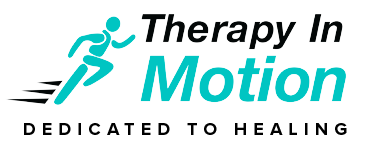It’s National Physical Therapy Month!
That might not mean anything to you, but it’s a big deal to us. Mostly because it gives us a chance to answer some of the most common questions we hear from patients. At the top of the list is what to expect at a physical therapy visit.
Physical therapy is a medical, hands-on approach to relieving pain and restoring function.
Physical therapists are medical experts in musculoskeletal and neurological conditions and work closely with physicians.
So what to expect – it’s pretty simple. So simple, in fact, we’ve broken it down into four sections.
4 Parts of a Physical Therapy Visit
1. Scheduling
2. First Visit
3. Treatment Plan
4. Post-Visit
Let’s start with scheduling your appointment.
Scheduling
Scheduling is pretty easy in our physical therapy and rehabilitation clinics – you can either call one of our conveniently located clinics or go online to request an appointment.
Make sure to have your insurance card and prescription handy when you call. It will speed up benefits verification and reduce registration time during your visit.
If you don’t already have a prescription from your doctor for PT, no problem. Despite the common misconception that you need a referral, many states allow you to make an appointment without one. If your state doesn’t, reach out to your primary care provider and ask for one. You are your own health care advocate, after all.
Let’s start with your first visit.
First Visit
In first visit with a physical therapist, they will assess your condition and create a treatment plan.
How long should you plan for your first visit?
The average first PT visit takes about an hour. That doesn’t include the 15 minutes you’ll spend before your visit signing in and/or changing clothes.
What happens during an initial evaluation?
Your physical therapist will spend a focused amount of time asking you questions about your condition, hear your concerns, and perform a thorough examination of your condition. They will assess your function, your movements, conduct a physical exam of your muscles and joints, and work to identify the cause of your pain. The therapist will begin some basic treatments at the first visit and explain to you their findings, the plan going forward and seek to hear your input on the plan. Together, you and your therapist will devise a long-term plan.
The overall goal is to get you back to being pain-free, mobile, and functioning at 100% to prevent injury or pain from recurring.
That’s where your treatment plan comes into play.
Treatment Plan
After your initial visit, you’ll then be scheduled for follow-up visits.
The frequency and duration of follow-up visits depend on your treatment plan. Most often, you should expect to have up to three physical therapy visits per week, with assessments along the way.
Your treatment plan will include a combination of therapies:
Exercise
Passive or active, exercise can help you improve strength, range of motion, or flexibility.
Passive exercise is when your PT moves your body to stretch your muscles or move your joints for you – a good example is hamstring stretch while you are relaxed on a therapy table.
Active exercise is similar to “working out” and can include walking on a treadmill, calf raises, and other strengthening exercises.
Functional exercise is a type of exercise that focuses on getting you back to specific functional activities that are highly important to you such as walking, climbing stairs, reaching overhead, or working.
Manual Therapy
Manual therapy includes a variety of hands-on treatments including soft tissue mobilization, joint mobilizations and manipulation as well as passive movements. These treatments are designed to help reduce pain and improve the motion and mobility of your body prior to exercise.
Dry Needling
Dry needling is a technique that is commonly used to help reduce muscular pain and trigger points that can occur with a variety of injuries and pain conditions. The therapist will use a very small needle to stimulate the trigger point to promote pain relief and relaxation of the specific muscle. No medication is delivered with this technique.
Taping
You PT may use a variety of taping techniques to help reduce pain, stabilize or help guide the movement of a joint, or improve the function of a muscle.
Electrical Stimulation
Electrical stimulation is used to decrease pain and teach your injured muscles to relearn how to function correctly.
Traction
Traction is a mechanical device that helps stretch your spinal joints. It is mostly used for low back and neck injuries to decrease pain and increase mobility, especially when there is irritation or compression on a nerve.
Heat
Heat may be applied to your injury to help increase circulation, relax muscles, and relieve pain.
Ice
In the same way that heat can help treat your injury, so can ice or cold packs. Specifically, ice can decrease pain and minimize inflammation.
Post-Visit
After your visit, you may feel additional soreness or a moderate amount of relief. Don’t panic. A certain amount of soreness is not unusual. Your body may be moving or working in a different way than it has recently.
Your physical therapist will recommend ice or heat, depending on how you feel. Your pain should subside to some degree, however, if your symptoms are worse than expected, contact your physical therapist to find out what is the best plan of action.
In between visits, you will likely have exercises and stretches to perform that will help improve function and get you closer to optimal mobility and function. Your adherence to this part of the program is essential to your progress. The therapist will help find ways to help you be consistent with your “homework”.
We look forward to helping you live your best life.
Find an Upstream family of brands physical therapy clinic near you.
